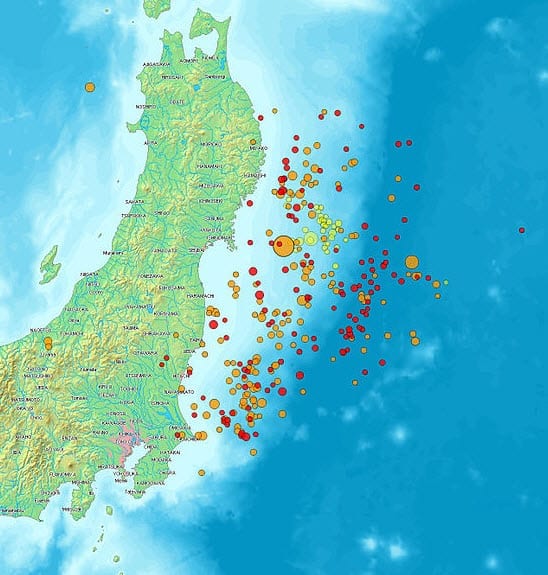 BOSTON, Feb. 16, 2012 – Catastrophe modeling firm AIR Worldwide released a new report titled, “Understanding Earthquake Risk in Japan Following the Tohoku-Oki Earthquake of March 11, 2011.” The M9.0 Tohoku earthquake changed the seismic risk landscape of Japan. In response, AIR scientists have conducted a detailed analysis of whether and where the stresses relieved by the Tohoku earthquake have been transferred to neighboring faults.
BOSTON, Feb. 16, 2012 – Catastrophe modeling firm AIR Worldwide released a new report titled, “Understanding Earthquake Risk in Japan Following the Tohoku-Oki Earthquake of March 11, 2011.” The M9.0 Tohoku earthquake changed the seismic risk landscape of Japan. In response, AIR scientists have conducted a detailed analysis of whether and where the stresses relieved by the Tohoku earthquake have been transferred to neighboring faults.
Although damage from this event is most closely associated with the massive tsunami-which in places reached a height of more than 30 meters and demolished nearly all structures within its footprint-by AIR’s estimate, the tsunami was responsible for only about 30% of overall insured losses from this event. Shake damage was far more widespread-and it is worth remembering that shake damage would have been significant within the area subsequently impacted by the tsunami.
AIR’s preliminary findings are now available in the newly released report. The paper discusses the effects that stress transfer may have on future rupture probabilities-including on subduction zone segments and crustal faults in the vicinity of Tokyo. For example, AIR’s analysis indicates that the 30-year rupture probability of M ≥ 6.7 earthquakes in the Kanto Plain, may have increased from 72% to between 81% and 93%.
Also discussed in the report is the performance of the current AIR Earthquake Model for Japan in the immediate aftermath of the event.
To read the full report, please click here http://bit.ly/wgNd7L
